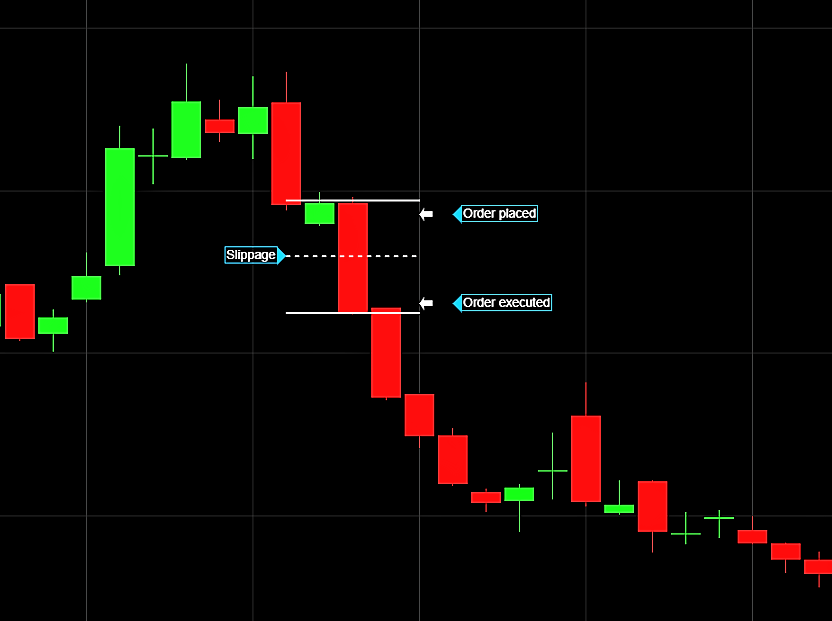Let’s look at a couple of spread betting examples of slippage, using different order types.
Assume a trader wants to open a long position on Tesla stock and it is trading at $751.35 (offer price). They place a market order, and the order fills at $751.30. That’s a positive slippage, as the trader got a better price than expected.
However, next assume the order fills at $751.43. That’s a negative slippage because they got a slightly worse price than expected. This could’ve occurred because the shares being sold at $751.35 were no longer available when the order reached the market, so the order looked for the next available price to buy at, which in this case was $751.43.
The trader could also use a limit order to control the price they pay. For example, they could place a buy limit order at $751.35, which caps the price paid. This would mean that the order will only be carried out if someone is willing to sell at or below $751.35.
Now, assume the trader who bought the shares wants to place a stop-loss order on the trade at $745. If the bid price falls to $745 or below, then the stop-loss (sell order) is executed. Once again, there is the potential for slippage, either positive or negative, depending on the bid price that is available to sell to at the time the order is executed.
It’s worth noting that we also offer guaranteed stop-loss orders which guarantee to exit a trade at the exact price you want, regardless of market volatility or gapping.
Let’s look at one more basic example when spread betting in the forex market. Assume a trader wants to sell (short) the EUR/USD, and the price is at 1.20200. They want to sell only if the price drops below 1.20000. Therefore, they place a sell stop order at 1.19999.
If the bid price becomes 1.19999 or below, the order is executed to sell. If, due to market volatility, the bid moves to 1.19996 at that time, the trader will experience 0.3 pips of negative slippage. On the other hand, the bid may increase the moment the order is executed and jump back up to 1.20003. In that case, they get a better price than expected by 0.4 pips.
If the trader then placed a stop-loss on this trade, the same concepts apply to that order.



